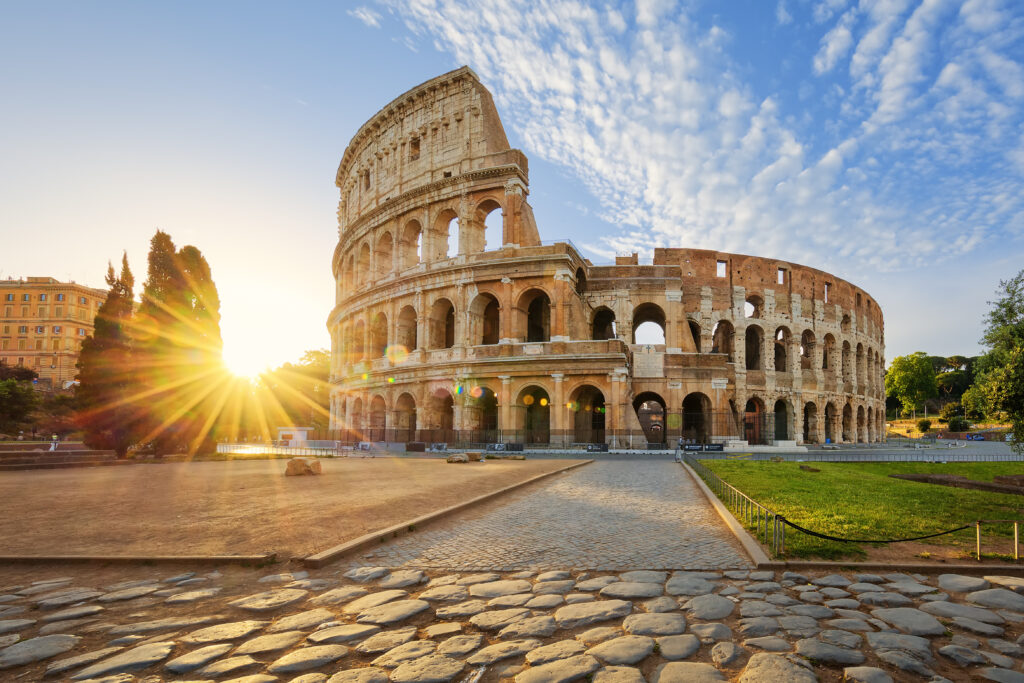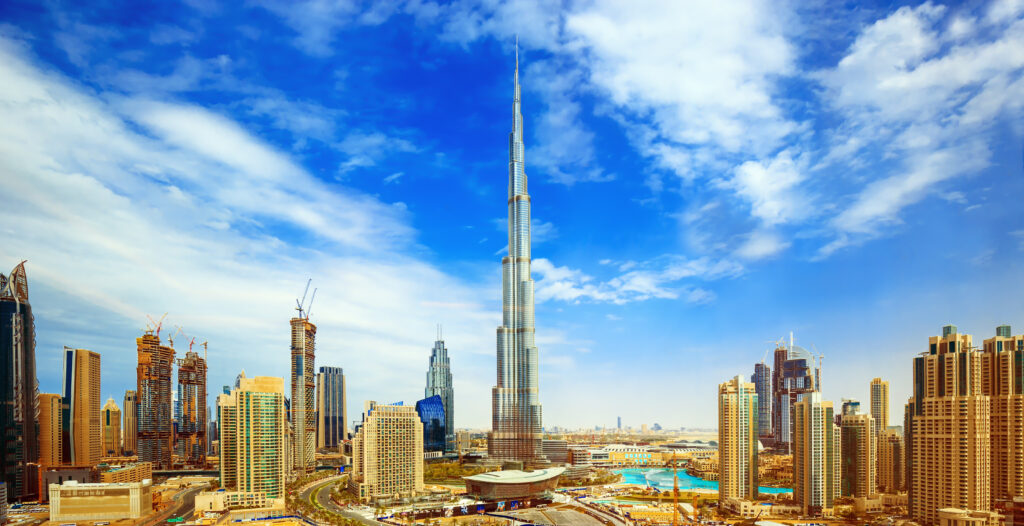The evolution of concrete construction was done a long years ago. The invention of concrete depends upon how concrete is interpreted. In olden times crude cement was used in construction by crushing and then burning gypsum or limestone.
The sand and water were mixed to the cement, mortar was formed which is a plaster like material used for sticking stones to each other. Over the span of many years, improvement was made in the materials which were transformed into modern concrete.
Table of Contents
From the ancient structures of Roman architecture to tall skyscrapers of the cities concrete has been a major raw material being used in the construction journey.
The Ancient Roots of Concrete:
The use of concrete is as old as the Roman civilization has been in existence. The evidence of archeology shows that the concrete was used in Syria and Jordan around the year 6500 before Christ [BC].
The early builders found the benefits of hydraulic lime. It is a substance that hardens after mixing with water. This material was used for building concrete-like floors and housing structures. Etc.

In ancient times, in Egypt, the contractors used an elementary form of concrete made from mud mixed with straw for the binding of dry bricks. Use of gypsum and lime mortars were also done in structures like Pyramids for which 5 lakh tons of mortar was used.
The Romans were the true explorers of concrete. The times around 300 BC Romans had developed more advanced concrete by using a mixture of volcanic ash, seawater, and lime. The pozzolana material had a good property of hardening inside the water which helped in building underwater marine structure.
The Romans started using concrete extensively out of which many structures stand still even today. The Colosseum is the world’s largest amphitheater in the world while the dome named Pantheon is the best example of the durability and versatility of the Roman concrete structures.
The Discovery and Evolution of Concrete:
The dark age of concrete was there when it was not used for many years when Roman Empire was destroyed.
In regard to hydraulic lime, such as concrete, it has been rediscovered in the 18th century. The scientist John Smeaton was the person who is a British Civil Engineer was given credit for the use of hydraulic lime to build Eddystone lighthouse in Cornwall, UK which was destroyed due to storms. John Smeaton is regarded as the “Father of Civil Engineering” as he made many inventions related to cement.
The innovation of Portland cement was done in the year 1824 for the use to make concrete. The scientist heated the limestone and clay and removed carbon dioxide from the mixture.
William Aspidin was a manufacturer of cement and a pioneer in the Portland cement industry. William did the invention of Portland cement which was like a transformation in construction industry.
William Aspidin had built his own cement factory in the year 1843 at Rotherhithe in London. William also discovered that various other products can be manufactured with more applications with the modification of cement.
The output derived was that when the mixture was mixed with water, a hard substance had formed like Portland stone which is a popular building stone. This step led to the foundation of solid concrete.
The 19th Century: Industrial Revolution and Concrete
When the industrial revolution started to begin the ordinary Portland, cement was started in bulk production. In the 19th century, there was a beginning of reinforced concrete which was stronger & durable concrete.
In a later stage, it was discovered that the addition of iron mesh increased the strength of concrete which made the material more resistant to tension, which led to the development of reinforced concrete. In these times in the 19th century, many iconic structures were built.
The 20th Century Concrete Comes of Age:
During the twentieth century, concrete was increasingly utilized. There were multiple developments in this century like the development of high-strength concrete and prestressed concrete which led to the expansion of construction activities.
Concrete became the most preferred material for building structures like tall buildings, highways, bridges, and roads.
The Burj Khalifa is currently tallest building structure in the world and is a famous tourist attraction. The primary structure of Burj Khalifa was made of reinforced hydraulic cement concrete & steel, limestone, clay, . This building consists of 30,000 homes being built inside the tower and 9 hotels, 3 hectares of parkland, 19 residential skyscrapers, Dubai mall &12 hectares of Burj Khalifa lake.

Thus, the structure of Burj Khalifa is amongst the unique structures famous worldwide and is a luxury building made of concrete which has become a world famous tourist attraction.
Concrete continues to be a widely used material in today’s times all around the world due to its versatility, durability, and strength. Currently, concrete is the most commonly used material for construction purposes especially in the building of houses and the development of infrastructures.
Modern Concrete and its Role in Architecture:
The use of concrete increased drastically in the 21st century with the entry of new forms of versatile material which pushed the boundaries of the possibility of building structures in construction and architecture.
The invention of self-healing concrete was one of the best innovations. There have been research activities on using bacteria to cure concrete from the start of the 21st century. This technology helps increase the strength and durability of concrete and reduces maintenance costs.
The innovation of translucent concrete was also done in the 21st century. The use of optical fibers and concrete admixtures in which the light can pass through the concrete due to which it is named translucent concrete.
The construction of the World One tower in Mumbai is amongst the best examples of concrete construction in the 21st century with 118-story & another 75-story building built in South Mumbai.
The strength, durability, and versatility of concrete have made it a preferred material in architectural design.
The Science and Technology Behind the Concrete:
The cement industry has played a key role in the development of concrete. When it comes to preparing concrete, cement is one of the main components that is utilized. The science behind cement manufacturing is very complex as it requires careful selection of materials to be used.
The concrete mix contains cementitious material like blast furnace slag or granulated blast furnace slag which improves the qualities of concrete like gaining strength and environmental sustainability.
The innovations that have taken place in concrete like high-performance cement paste have led to the creation of unconventional concrete such as translucent and self-healing variants.
Concrete in Transport: Roads, Bridges and Airports

There are many quality projects of infrastructure of national importance that have been built with the help of concrete. The construction of highways, overhead sea bridges, flyovers, and parking areas concrete has found its application in many ways.
The manufacturing of precast structures and concrete reinforcement with fibers has led to strong and long-lasting structures. The concrete mixing plants have played an important role in the consistency and quality of the concrete, which meets the demand of modern transportation projects.
Decorative Concrete: Art and Aesthetics
There is decorative concrete available which has replaced ordinary concrete. Techniques such as staining and stamping create good-looking visual surfaces in concrete buildings and public spaces.
Challenges and Solutions in Concrete Construction:
The challenges faced in concrete are that cracks develop inside the hard concrete while shrinkage happens in the case of freshly made concrete. The latest solutions include making use of admixtures, synthetic fibers, and 3D painting which is amongst other innovative techniques being used at a construction site.
Concrete and Society: Economic and Social Impacts
The excavation of cement and production leads to heavy industrial pollution which leads to environmental impact and leads to global warming. The use of blast furnace slag shows its commitment to the protection of the environment.
Global Concrete Usage:
The use of concrete globally varies based on multiple factors such as economic development, population factors, cultural preference, and environmental considerations. The producers of concrete are making use of innovative materials like supplementary cementitious materials and use of alternative fuels which can drastically reduce pollution.
Concrete Recycling and Environmental Considerations:
The demolished concrete of the old structures can be recycled into coarse aggregates for the new projects. Making use of recycled concrete and fly ash helps in reducing waste. The standardization and collection of data are the major challenges in making recycling a common practice.
Safety and Regulations in the Concrete Industry:

Worker protection, material quality, and environmental compliance are the major safety regulations in the concrete industry. The protection from fire, compressive strength, and compliance with global standards are the necessary aspects of quality control.
The Emergence of Green Concrete:
In the 21st century, rapid industrial growth and rapid growth of the economy led to a massive increase in construction activity. Thus, the pressure started rising related to environmental sustainability.
The emergence of environmentally friendly concrete was driven by the necessity for the utilization of eco-friendly concrete. Green concrete is popularly also known as low-carbon concrete and has become very popular to reduce carbon emissions. The green concrete mixes up with utilization of fly ash and furnace slag so as to minimize waste and decrease carbon emissions.
The development of green concrete is due to the growing awareness related to environmental impact due to construction activity. Traditional concrete produces 8% of the total carbon dioxide in the environment globally. Thus, the reduction of emission of carbon into the atmosphere is essential.
The use of green concrete is amongst the best alternatives which has gained popularity due to its lower impact of environmental degradation.
Conclusion:
Thus, the use of concrete began in Roman times in the times Before Christ, concrete gained its popularity in the 19th century. By the time of 20th century concrete gained importance even more in building high-quality structures due to its suitability in construction and the higher demand for construction due to rising economy.
The use of low-carbon concrete is amongst the latest technologies in concrete due to its lower impact on the environment. The use of waste materials like silica fume and fly ash has helped in the reduction of waste material and improved the strength of concrete along with a reduction in carbon emission.
Thus, the use of concrete is being done across the world and many prominent structures have been built with the help of concrete.
Found the blog informative? Share it.

